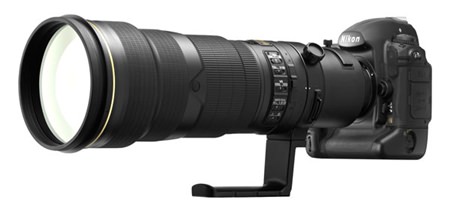Look! There goes a ‘real’ photographer! Any pro shooter, or even a serious amateur, can be recognized with their photographer’s jacket pockets stuffed with lenses. Fish eye, wide angle, “normal”, long, and extra-long.
Ever wondered why the pros all walk around with all these lenses and three cameras slung around their necks? Is this a kind of photographic masochism, or is there a good reason for this? There is!
The reason is called “quality”. Pro shooters have to return to their editor or client with a professional image, giving the best interpretation of the subject and finally be pin sharp in its definition. Something you can’t get with a point and shoot camera or an image from your phone-cam.
To illustrate this situation I thought I should give you some ideas on three of the lenses to use, for what and why. Now if you own a 28-105 mm zoom or whatever, don’t despair, just adapt your thinking to use the zoom at the wide angle when I mention wide angle lenses and the other end of the scale when I mention telephoto lenses.

The three principal lenses are Wide, Standard and Long, and for the purposes of this article I am not including “extreme” examples. Consider Wide to be around 24-28 mm, Standard around 50 mm and Long around 100-150 mm. So you can see, the average zoom lens will cover these focal lengths.
Let’s begin with Wide lenses. These are the lenses for 99.9 percent of landscapes. You get a wide angle of coverage, you get great depth of field and as an added bonus you get blue skies! Even in Bangkok. The reason is that you have a wide angle of sky “squashed” into 12 megapixels, so the colour is denser than it would appear to the naked eye. I have always said that photography is the art of telling lies with a camera.
The Wide lens is also the one you should use in low light situations, such as twilight, as most Wide lenses have larger apertures which let more light in to the camera. This means that you can get readings like 1/30 second at f 2.8, at which you can hand hold. With the average Long lens (or zoom in the tele position) it would be 1/4 second at f 5.6 a shutter speed you cannot hand hold.
The Standard lens is actually one of the most neglected lenses in your camera bag. This is the focal length that most closely approximates what the human eye sees. Use this lens and you get the most “life-like” image that people can immediately relate to. No strange distortions in the foreground or on the edges either. For example, if you want to photograph food, pull out the trusty Standard lens. Stand on a chair and you get what the diner sees.
The Standard lens is also very good for getting either full length portraits or waist up pictures. Again, it is the lack of optical distortion which is important, and you can also use aperture settings around f 4 to blur the background.
So to the Long lenses. The focal length of around 100 mm would be more accurately called a “short” telephoto, but this is a common focal length and one that many of the zooms can cover. This is the lens you use to do all portrait shots. This lens will give you flattering views, without enlargement of the nose, and slightly compresses the image. When combined with a wide aperture of say around f 4 to f 5.6 this blurs the background enough to produce an uncluttered image.
The ability to compress the final image makes the Long lens the ideal one to show traffic jams or parades. Use a high viewpoint and look down the road when a parade is coming and you will get an image that appears to show that the road is just crammed with floats, one almost on top of another. Or better still try Sukhumvit Road from the overhead bridges.
Finally, it is important to remember that Long lenses are not a substitute for walking in close, especially at night, when the flash burst does not carry all that far.




